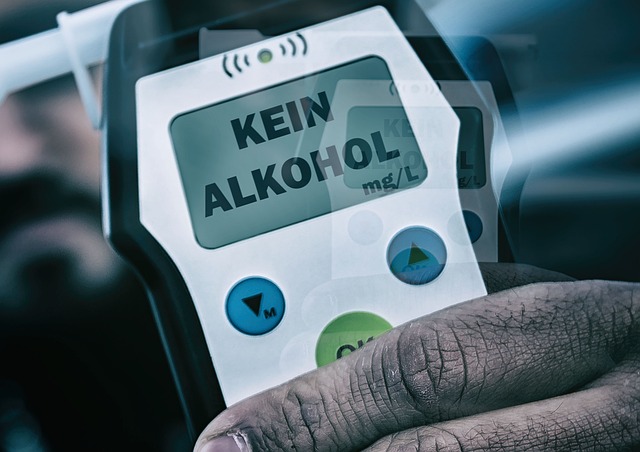Corporate DUI Awareness Workshops, focusing on driving sobriety, indirectly boost pedestrian safety by reducing accidents. These workshops foster a road safety culture, encouraging drivers to be more attentive to pedestrians. By educating employees about drinking and driving risks, companies actively contribute to community safety, promoting responsible behavior and safer streets for all.
In many cities, pedestrians face significant risks on the road. This article delves into strategies for enhancing pedestrian rights and ensuring safe streets. We explore critical concerns like understanding pedestrian safety, corporate responsibility in DUI prevention through awareness workshops, designing inclusive walking environments, educating employees on pedestrian rights, and reducing pedestrian crashes. By implementing these measures, communities can foster a culture of safety and respect for all road users.
- Understanding Pedestrian Safety Concerns
- Corporate Responsibility: DUI Prevention
- Designing Safe Walking Environments
- Educating Employees on Pedestrian Rights
- Strategies for Reducing Pedestrian Crashes
Understanding Pedestrian Safety Concerns

Pedestrians’ safety on roads is a significant concern, often overshadowed by vehicle and driver-related issues. Understanding pedestrian safety involves recognizing unique challenges faced by folks on foot. One critical aspect is the impact of corporate DUI awareness workshops, which, while aimed at responsible driving, can indirectly enhance pedestrian security. These workshops promote driving sobriety, reducing the risk of accidents involving vehicles and pedestrians.
Moreover, they instill a culture of road safety, encouraging drivers to be more vigilant and considerate of pedestrians’ rights. By raising awareness about safe driving practices, these workshops contribute to a safer overall environment, where both drivers and pedestrians can coexist securely on the streets.
Corporate Responsibility: DUI Prevention

In today’s digital era, as cities become more bustling and complex, ensuring safe streets for pedestrians is a shared responsibility. Corporate entities play a significant role in promoting this cause by taking initiative on DUI (Driving Under the Influence) prevention. One effective strategy is conducting Corporate DUI Awareness Workshops. These workshops can educate employees on the potential dangers of drinking and driving, fostering a culture of responsible decision-making. By organizing such sessions, companies contribute to creating a safer environment for everyone, not just their workforce but also the broader community.
Additionally, these workshops can be tailored to highlight local laws and regulations regarding DUI, making sure that corporate citizens are well-informed. This proactive approach not only helps in reducing incidents of impaired driving but also underscores the company’s commitment to social responsibility. Safe streets start with awareness, and Corporate DUI Awareness Workshops are a powerful tool in this direction.
Designing Safe Walking Environments

Creating safe walking environments is paramount for ensuring pedestrians’ rights and well-being. Urban planners and local governments play a pivotal role in designing roads and public spaces that prioritize foot traffic. This involves implementing various strategies, such as dedicated pedestrian walkways, well-maintained sidewalks, and clear signage to guide both walkers and drivers. Additionally, integrating visually appealing elements like greenery and art can enhance the overall experience, making streets more inviting for pedestrians.
Moreover, integrating Corporate DUI Awareness Workshops into urban planning initiatives can further contribute to safer walking environments. By educating businesses and communities about drunk driving risks, these workshops promote responsible behavior among employees and residents. This collective effort not only reduces accidents but also fosters a culture of awareness, ensuring that everyone understands their role in creating and maintaining safe streets for all pedestrians.
Educating Employees on Pedestrian Rights

Ensuring safe streets for pedestrians is not just about infrastructure; it involves fostering a culture of awareness and respect among all road users, including employees. Many companies conduct Corporate DUI Awareness Workshops to educate their staff about driving responsibly. Similarly, there’s a growing need for Pedestrian Rights Education programs to make employees aware of the rights and safety considerations of pedestrians. This includes understanding the rules of the road from a pedestrian’s perspective, recognizing potential hazards in the urban environment, and promoting responsible behavior that prioritizes the well-being of those on foot. By integrating such educational initiatives into corporate training programs, organizations can contribute to creating a safer and more inclusive public space for everyone.
Strategies for Reducing Pedestrian Crashes

To reduce pedestrian crashes and ensure safer streets, several strategic initiatives can be implemented. One key approach is to enhance driver education and awareness through programs like Corporate DUI Awareness Workshops. These workshops play a crucial role in promoting responsible driving behaviors and reducing impaired driving, which significantly contributes to pedestrian safety. By teaching drivers about the dangers of distracted and drunk driving, these workshops empower them to make safer choices on the road.
Additionally, urban planning and infrastructure changes are vital. This includes designing streets with dedicated pedestrian lanes, improving crosswalk visibility, and installing traffic calming measures like speed bumps or roundabouts. Such physical modifications not only discourage speeding but also provide pedestrians with more time and space to cross streets safely. Integrating these strategies can create a more secure environment for pedestrians, fostering a culture of safety within communities.
Ensuring safe streets for pedestrians is a multifaceted effort. By addressing concerns through better design, education, and corporate responsibility, we can significantly reduce pedestrian crashes. Implementing strategies like designing walkable environments, hosting Corporate DUI Awareness Workshops, and educating employees on pedestrians’ rights creates a culture of safety. Ultimately, these efforts not only protect individuals but also foster vibrant communities where everyone can move freely and securely.






